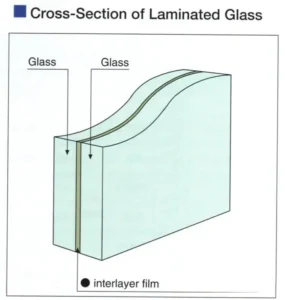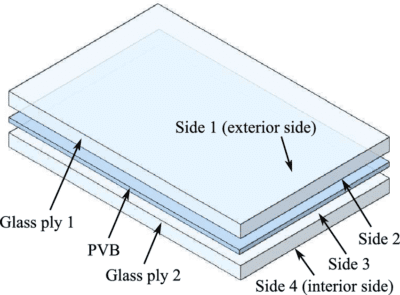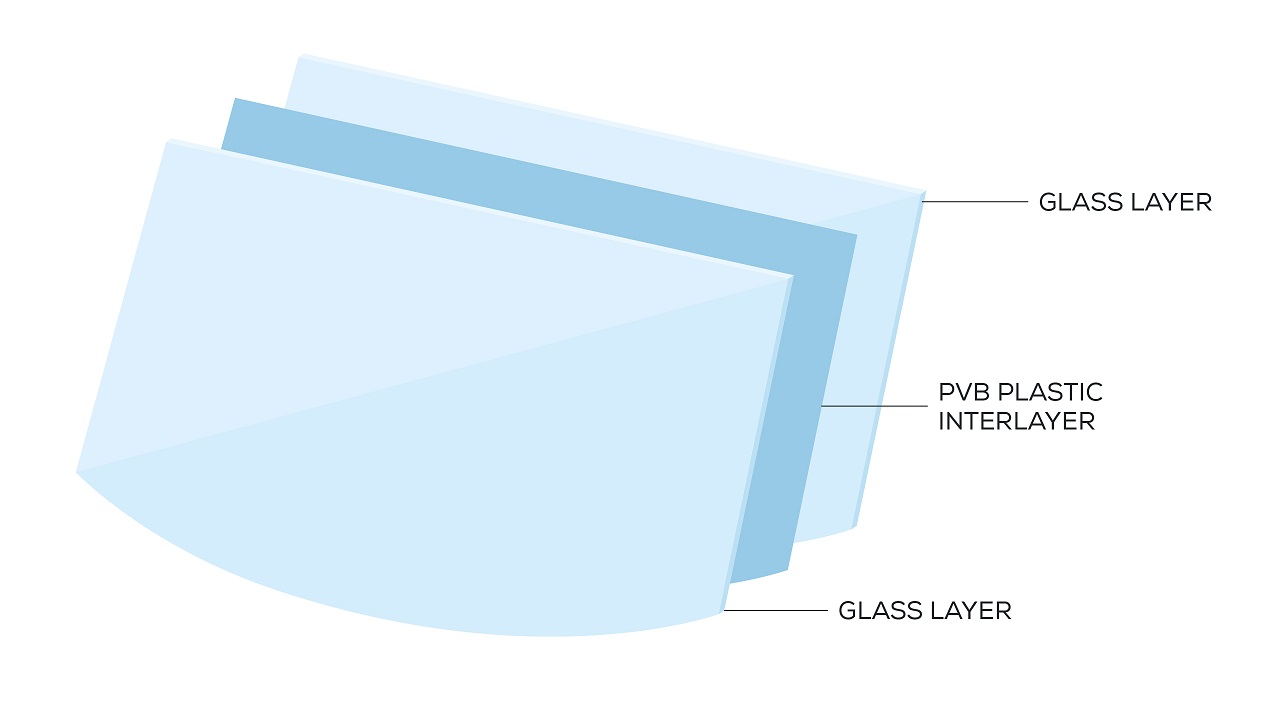Exploring 38 the Diversity of Car Windscreens: A Comprehensive Guide
Exploring 38 the Diversity of Car Windscreens: A Comprehensive Guide
Introduction: In the world of automobiles, windscreens play a crucial role not only in providing structural integrity to the vehicle but also ensuring the safety and comfort of the passengers. Over the years, car windscreens have evolved significantly, adapting to technological advancements, changing safety standards, and diverse consumer preferences. In this comprehensive guide, we will delve into the various types of car windscreens, their features, benefits, and innovations, offering a detailed insight into this essential component of modern vehicles.
Windscreen technology,
- Traditional Laminated Windscreens:
- Laminated windscreens, also known as safety glass, are the most common type found in automobiles.
- Constructed by sandwiching a layer of transparent plastic (usually PVB – Polyvinyl Butyral) between two layers of glass.
- Offers excellent protection against impact, preventing the glass from shattering upon collision.
- Provides UV protection and reduces interior heat buildup.
- Widely used due to their durability, safety, and cost-effectiveness.
- Tempered Glass Windscreens:
- Tempered glass windscreens undergo a special heat treatment process to increase their strength.
- Designed to shatter into small, dull pieces upon impact, reducing the risk of severe injuries.
- Offers improved resistance to thermal stress and mechanical pressure compared to standard glass.
- Often used in side and rear windows, less commonly found in front windscreens due to safety regulations.
- Solar Control Windscreens:
- Solar control windscreens incorporate special coatings or films to reduce heat and glare from sunlight.
- Helps maintain a comfortable interior temperature and reduce the strain on the vehicle’s air conditioning system.
- Improves visibility by minimizing reflections and glare, enhancing driving safety.
- Ideal for regions with hot climates or prolonged exposure to sunlight.
- Hydrophobic Windscreens:
- Hydrophobic windscreens feature coatings that repel water, causing it to bead up and roll off the surface.
- Enhances visibility during rainy conditions by preventing water droplets from obstructing the driver’s view.
- Reduces the need for windshield wipers and improves overall driving experience in wet weather.
- Acoustic Windscreens:
- Acoustic windscreens are designed to minimize external noise and vibrations, providing a quieter cabin environment.
- Utilize special sound-absorbing materials or laminated glass with acoustic interlayers to dampen noise transmission.
- Enhances comfort during long drives and improves audio quality from the vehicle’s entertainment system.
- Heads-Up Display (HUD) Windscreens:
- HUD windscreens integrate transparent display technology to project essential information directly onto the driver’s line of sight.
- Display vital data such as vehicle speed, navigation directions, and safety warnings without the need to divert attention from the road.
- Enhances driving safety and convenience by providing real-time information without obstructing the view.
- Smart Windscreens:
- Smart windscreens incorporate advanced sensors and technologies to offer additional functionalities.
- Equipped with rain sensors that automatically activate wipers when moisture is detected.
- Integrated with cameras and sensors for lane departure warning systems, adaptive cruise control, and collision avoidance.
- Represents the future of automotive safety and connectivity, paving the way for autonomous driving capabilities.
- Self-Healing Windscreens:
- Self-healing windscreens feature innovative materials capable of repairing minor scratches and abrasions automatically.
- Utilize special polymers or coatings that have the ability to reseal small cracks upon exposure to sunlight or heat.
- Offers extended durability and reduces the need for frequent replacements, contributing to cost savings and sustainability.
Conclusion: The evolution of car windscreens has been driven by a combination of safety requirements, technological innovations, and consumer preferences. From traditional laminated glass to cutting-edge smart windscreens, each type offers unique features and benefits tailored to enhance the driving experience. As automotive technology continues to advance, we can expect further improvements in durability, safety, and functionality, reaffirming the importance of windscreens as an integral component of modern vehicles.

Exploring 38 the Diversity of Car Windscreens: A Comprehensive Guide
- Privacy Glass Windscreens:
- Privacy glass windscreens incorporate tinted or darkened glass to enhance privacy and reduce glare from external sources.
- Offers occupants increased confidentiality by limiting visibility into the vehicle’s interior.
- Provides protection against UV rays, reducing the risk of sun damage to upholstery and dashboard components.
- Popular in luxury vehicles and SUVs, adding a touch of sophistication while improving comfort for passengers.
- Heated Windscreens:
- Heated windscreens feature embedded heating elements that quickly defrost ice and frost buildup during cold weather conditions.
- Improves visibility and safety by eliminating the need for scraping or waiting for the windshield to clear.
- Activated with the vehicle’s heating system, offering convenience and efficiency in winter climates.
- Ensures uninterrupted visibility, especially during early morning commutes or icy conditions.
- Gradient Tint Windscreens:
- Gradient tint windscreens feature a gradual shading effect, with darker tinting at the top gradually transitioning to lighter tinting at the bottom.
- Reduces glare from the sun, particularly in the upper portion of the windshield, without compromising visibility.
- Enhances driving comfort by minimizing eye strain and fatigue during long journeys.
- Offers a stylish aesthetic while providing practical benefits for drivers and passengers.
- Anti-Fog Windscreens:
- Anti-fog windscreens incorporate coatings or treatments that prevent fogging by reducing surface tension and promoting moisture dispersion.
- Ensures clear visibility in humid or cold conditions, preventing condensation from obstructing the driver’s view.
- Improves safety by maintaining a clear line of sight, especially during sudden temperature changes or heavy rain.
- Ideal for regions with high humidity levels or frequent temperature fluctuations.
- Electrochromic Windscreens:
- Electrochromic windscreens utilize electrochromism technology to adjust the level of tinting or opacity based on external light conditions.
- Offers customizable shading options, allowing drivers to control the amount of sunlight entering the cabin.
- Enhances comfort by reducing glare and heat buildup, particularly during bright sunny days.
- Provides a futuristic and high-tech aesthetic, appealing to tech-savvy consumers and luxury vehicle enthusiasts.
- Polycarbonate Windscreens:
- Polycarbonate windscreens are made from durable and lightweight polycarbonate material, offering superior impact resistance compared to traditional glass.
- Commonly used in racing cars and high-performance vehicles due to their ability to withstand extreme conditions.
- Provides enhanced safety by reducing the risk of shattering or splintering upon impact, protecting occupants from injury.
- Offers design flexibility, allowing for unique shapes and contours, contributing to aerodynamic efficiency and aesthetic appeal.
- Composite Windscreens:
- Composite windscreens incorporate a combination of materials such as glass, plastic, and carbon fiber to achieve optimal strength, durability, and performance.
- Engineered for specific applications such as sports cars, aircraft, and military vehicles, where lightweight and high-strength properties are essential.
- Offers superior resistance to impact, abrasion, and extreme temperatures, ensuring reliability in demanding environments.
- Represents the forefront of material science and engineering, pushing the boundaries of what is possible in automotive design and technology.
Conclusion: The diversity of car windscreens reflects the continuous innovation and evolution within the automotive industry. From traditional laminated glass to advanced smart technologies, each type offers unique features and benefits tailored to meet the needs of drivers and passengers. As manufacturers strive to enhance safety, comfort, and performance, we can anticipate further advancements in windscreen technology, shaping the future of automotive design and engineering.
Automotive safety,
- Flexible Windscreens:
- Flexible windscreens utilize innovative materials and design techniques to provide flexibility and impact resistance.
- Ideal for off-road vehicles, ATVs, and military applications where ruggedness and durability are paramount.
- Offers protection against debris, branches, and other hazards encountered during off-road adventures.
- Designed to withstand extreme vibrations and shocks without compromising visibility or structural integrity.
- Bulletproof Windscreens:
- Bulletproof windscreens are engineered to provide ballistic protection against projectiles and high-velocity impacts.
- Utilize specialized laminates or layers of polycarbonate and glass to stop bullets and projectiles from penetrating the cabin.
- Commonly used in armored vehicles, VIP transports, and military convoys to protect occupants from ballistic threats.
- Represents the pinnacle of safety and security in automotive applications, offering peace of mind in high-risk environments.
- Self-Cleaning Windscreens:
- Self-cleaning windscreens feature hydrophilic coatings or treatments that repel dirt, dust, and debris, keeping the surface clean and clear.
- Enhances visibility and driving safety by reducing the buildup of contaminants that can obscure vision.
- Activated by rainfall or water, allowing the windshield to effectively rinse away accumulated dirt and grime.
- Reduces the need for manual cleaning and maintenance, saving time and effort for vehicle owners.
- Embedded Sensors and Displays:
- Windscreens with embedded sensors and displays integrate advanced technologies such as touchscreens, cameras, and augmented reality.
- Enable interactive features such as gesture control, facial recognition, and augmented reality overlays for navigation and entertainment.
- Enhance driver assistance systems by providing real-time feedback and alerts directly within the driver’s field of view.
- Represents the convergence of automotive and digital technologies, offering seamless connectivity and intuitive user experiences.
- Modular Windscreens:
- Modular windscreens consist of interchangeable components that allow for easy replacement and customization.
- Designed to facilitate quick repairs and upgrades, reducing downtime and maintenance costs for vehicle owners.
- Offer flexibility in design and functionality, allowing drivers to personalize their vehicles according to their preferences.
- Ideal for fleet vehicles, commercial trucks, and rental cars, where efficiency and versatility are key considerations.
- Enhanced Durability and Scratch Resistance:
- Windscreens with enhanced durability and scratch resistance feature special coatings or materials that provide added protection against abrasions and impacts.
- Designed to withstand harsh environmental conditions, road debris, and minor collisions without compromising clarity or integrity.
- Extend the lifespan of the windscreen and reduce the frequency of replacements, resulting in long-term cost savings for vehicle owners.
- Suitable for high-mileage vehicles, commercial fleets, and heavy-duty applications where durability is critical.
Conclusion: The diverse range of car windscreens available today reflects the continuous innovation and evolution within the automotive industry. From flexible and bulletproof designs to self-cleaning and modular solutions, each type offers unique features and benefits tailored to meet the needs of drivers and passengers. As manufacturers push the boundaries of technology and materials, we can expect further advancements in windscreen design, safety, and functionality, shaping the future of automotive transportation.
Advanced materials,

- Transparent Solar Panels:
- Windscreens equipped with transparent solar panels harness solar energy to power onboard electronics and accessories.
- Integrates photovoltaic cells into the glass substrate, allowing for seamless integration without compromising visibility.
- Provides a sustainable energy solution, reducing reliance on traditional power sources and lowering carbon emissions.
- Supports eco-friendly driving practices and reduces the environmental footprint of vehicles.
- Emergency Escape Systems:
- Windscreens with built-in emergency escape systems incorporate features such as breakable glass or emergency release mechanisms.
- Designed to facilitate quick and safe evacuation in the event of an accident or vehicle entrapment.
- Enables passengers to exit the vehicle efficiently, minimizing the risk of injury or fatality during emergency situations.
- Offers added peace of mind and safety assurance for drivers and occupants.
- Driver assistance systems,
- Anti-Theft Technology:
- Windscreens equipped with anti-theft technology integrate sensors and alarms to deter theft and break-ins.
- Detects unauthorized entry attempts or tampering with the vehicle’s glass components, triggering audible and visual alerts.
- Provides an additional layer of security and protection for valuable belongings and automotive assets.
- Enhances vehicle security systems and complements existing anti-theft measures.
- Smart glass,
- Aerodynamic Design:
- Windscreens with aerodynamic design features are engineered to reduce drag and improve fuel efficiency.
- Utilizes curved shapes, streamlined profiles, and advanced materials to optimize airflow and reduce resistance.
- Enhances vehicle performance and stability, particularly at high speeds, resulting in smoother and more efficient driving.
- Contributes to reduced fuel consumption and greenhouse gas emissions, supporting sustainable transportation initiatives.
- Advanced Holographic Displays:
- Windscreens equipped with advanced holographic displays project three-dimensional images and information directly onto the glass surface.
- Offers immersive and interactive user experiences, enabling drivers to access navigation, entertainment, and vehicle diagnostics in real-time.
- Enhances driver engagement and reduces distraction by consolidating essential information within the driver’s field of view.
- Represents the future of in-car entertainment and connectivity, revolutionizing the driving experience.
- Adaptive Transparency:
- Windscreens with adaptive transparency technology allow for adjustable levels of opacity or tinting to optimize visibility and comfort.
- Utilizes electrochromic or liquid crystal technology to dynamically control the transparency of the glass.
- Enables drivers to customize visibility settings based on lighting conditions, personal preferences, and driving scenarios.
- Enhances driving safety and comfort by providing optimal visibility and glare reduction in various environments.
- Vehicle connectivity,
Conclusion: The evolution of car windscreens encompasses a wide array of innovations and technologies aimed at enhancing safety, comfort, and performance. From transparent solar panels to adaptive transparency systems, each advancement represents a step forward in automotive engineering and design. As manufacturers continue to push the boundaries of possibility, we can anticipate further breakthroughs in windscreen technology, shaping the future of mobility and transportation.
- Interactive Augmented Reality:
- Windscreens with interactive augmented reality (AR) technology overlay digital information and graphics onto the driver’s view of the real world.
- Utilizes sensors, cameras, and advanced software algorithms to identify objects, landmarks, and navigation cues.
- Enhances situational awareness and navigation accuracy by providing real-time guidance, traffic updates, and hazard alerts.
- Reduces driver distraction by presenting relevant information directly within the driver’s line of sight, minimizing the need to look away from the road.
- Augmented reality displays,
- Biometric Authentication:
- Windscreens with biometric authentication systems use fingerprint or facial recognition technology to verify driver identity and enhance vehicle security.
- Integrates biometric sensors into the glass surface to authenticate driver credentials and authorize access to vehicle functions.
- Prevents unauthorized use of the vehicle and enhances personalization features such as seat and mirror adjustments, climate control settings, and entertainment preferences.
- Offers seamless and secure access to vehicle features, ensuring a personalized and tailored driving experience.
- Health Monitoring Sensors:
- Windscreens equipped with health monitoring sensors detect vital signs and biometric data of vehicle occupants to assess their well-being and alertness.
- Utilizes non-intrusive sensors embedded within the glass to monitor heart rate, respiration, and stress levels of drivers and passengers.
- Provides real-time feedback and alerts to prevent driver fatigue, drowsiness, or medical emergencies during long journeys.
- Enhances safety and reduces the risk of accidents by promoting driver wellness and awareness behind the wheel.
- Vehicle-to-Infrastructure Communication:
- Windscreens integrated with vehicle-to-infrastructure (V2I) communication systems exchange data with roadside infrastructure, traffic signals, and other connected vehicles.
- Facilitates real-time traffic management, route optimization, and collision avoidance by sharing information about road conditions, hazards, and traffic flow.
- Enables intelligent transportation systems (ITS) to enhance efficiency, reduce congestion, and improve overall road safety.
- Represents a key component of future smart cities and autonomous driving ecosystems, enabling seamless connectivity and cooperation between vehicles and infrastructure.
- Environmental Sensors:
- Windscreens equipped with environmental sensors monitor air quality, temperature, and humidity levels both inside and outside the vehicle.
- Utilizes integrated sensors to detect pollutants, allergens, and harmful gases, providing real-time feedback and alerts to occupants.
- Enables intelligent climate control systems to adjust ventilation, filtration, and air conditioning settings based on environmental conditions.
- Enhances occupant comfort and health by maintaining a clean and healthy cabin environment, particularly for allergy-sensitive individuals and those with respiratory conditions.
Conclusion: The latest advancements in car windscreen technology showcase the convergence of automotive innovation, digital connectivity, and user-centric design. From interactive augmented reality to biometric authentication and health monitoring sensors, each feature represents a step forward in enhancing safety, comfort, and convenience for drivers and passengers. As vehicles become increasingly connected and intelligent, we can expect further integration of advanced technologies into windscreen systems, transforming the driving experience and shaping the future of mobility.
- Privacy Protection:
- Windscreens equipped with privacy protection features ensure confidentiality and security for occupants.
- Utilize advanced tinting technologies or switchable privacy films to control visibility from the outside.
- Enhances privacy for passengers, particularly in urban areas or high-traffic environments.
- Offers peace of mind and protection against prying eyes and potential security threats.
- Customizable Interfaces:
- Windscreens with customizable interfaces allow drivers to personalize their digital cockpit according to their preferences.
- Offer configurable layouts, themes, and widgets for navigation, entertainment, and vehicle settings.
- Enhances user experience and engagement by providing intuitive and user-friendly interfaces.
- Enables seamless integration with smartphones, smartwatches, and other wearable devices for enhanced connectivity.
- Energy-Efficient Heating:
- Windscreens with energy-efficient heating systems utilize low-power technologies to defrost and de-ice the glass surface.
- Employ conductive heating elements or embedded wires to distribute heat evenly across the windscreen.
- Reduces energy consumption and battery drain while ensuring rapid defrosting and clear visibility in cold weather.
- Supports sustainable driving practices and reduces environmental impact.
- Dynamic Weather Adaptation:
- Windscreens with dynamic weather adaptation features adjust their properties and functionalities based on weather conditions.
- Utilize sensors and predictive algorithms to anticipate changes in temperature, humidity, and precipitation.
- Automatically activate heating, defrosting, or tinting functions to optimize visibility and comfort for occupants.
- Enhances driving safety and convenience by proactively responding to changing weather patterns.
- Integration with Smart Infrastructure:
- Windscreens integrated with smart infrastructure systems communicate with roadside sensors, traffic lights, and digital signage.
- Enable real-time data exchange for traffic management, route optimization, and emergency response coordination.
- Facilitate seamless integration with smart city initiatives and intelligent transportation networks.
- Contribute to safer and more efficient mobility solutions for urban environments.
- Maintenance Monitoring:
- Windscreens equipped with maintenance monitoring sensors track the condition and performance of glass components.
- Detect chips, cracks, or defects early on to prevent potential safety hazards and costly repairs.
- Provide proactive alerts and notifications to drivers and service centers for timely maintenance and replacement.
- Enhances vehicle reliability and safety by ensuring optimal windscreen integrity and functionality.
- Enhanced visibility,Passenger comfort,Future of mobility,
Innovative design,
Conclusion: The evolution of car windscreens is driven by a relentless pursuit of innovation and excellence in automotive engineering. From privacy protection and customizable interfaces to dynamic weather adaptation and integration with smart infrastructure, each advancement represents a step forward in enhancing safety, comfort, and connectivity for drivers and passengers. As technology continues to reshape the automotive landscape, the future of windscreens holds boundless possibilities, promising safer, smarter, and more sustainable mobility solutions for all.
S:a


